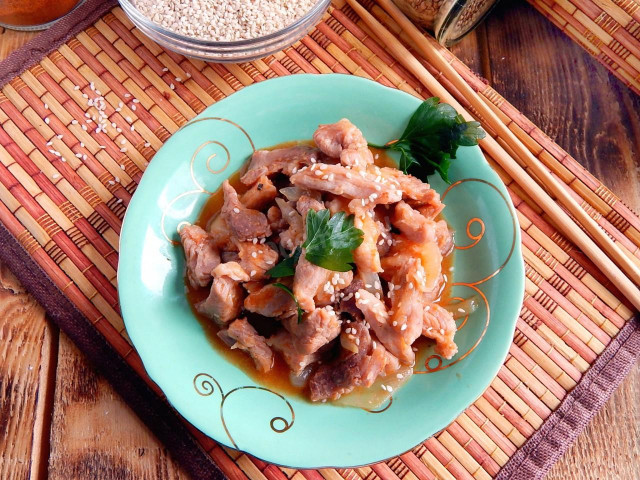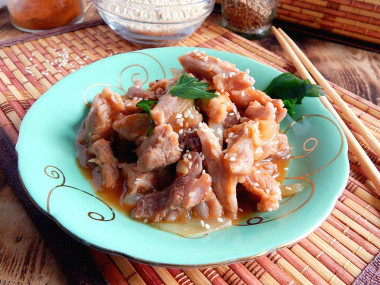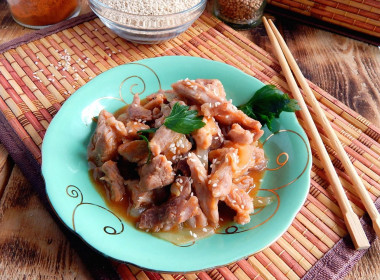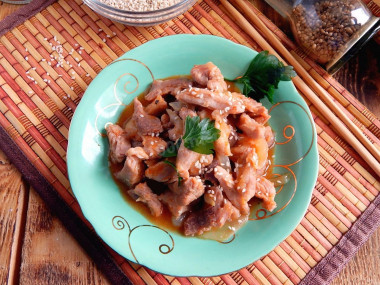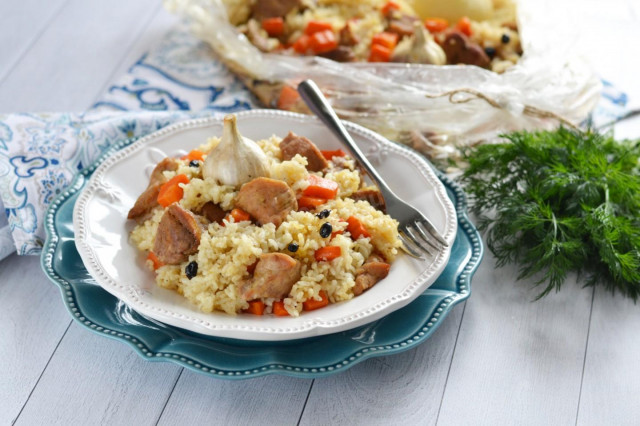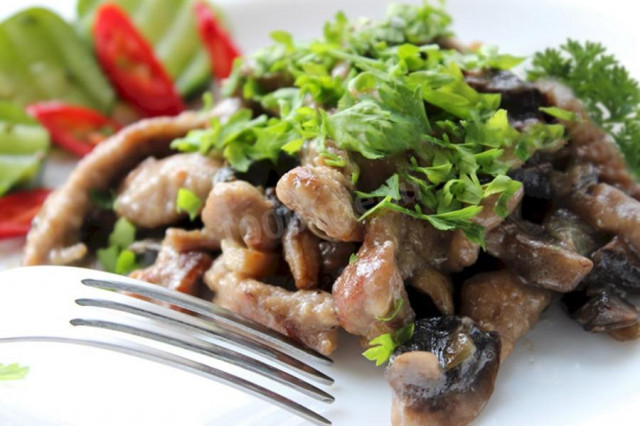Composition / ingredients
Step-by-step cooking
Step 1:
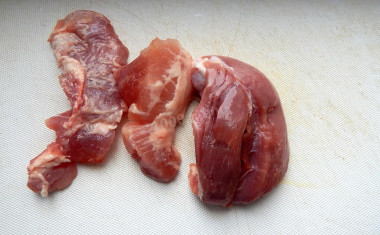
Prepare the ingredients for pork in Korean. As meat, it is better to use tenderloin, lean pieces of meat, and necessarily fresh and high-quality meat. From the meat we cut off the film, tendons and the remains of fat.
Step 2:

Cut the pork flesh into small cubes or straws no more than two centimeters thick. It is better to cut the meat across the fibers so that after frying it turns out soft and tender. We wash the meat under running water and let the water drain completely, throwing the meat into a colander. Put the pork in a deep bowl.
Step 3:
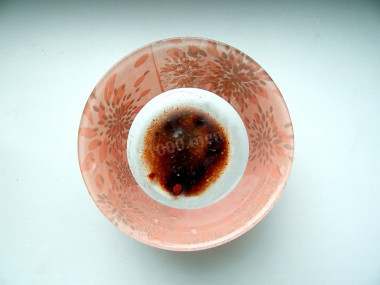
Prepare a marinade for pork. The basis of the marinade for pork in Korean is soy sauce, it is salty, so the rest of the spices, especially salt, should be added to it to taste, so as not to spoil the sauce with excessive addition of spices. Pour soy sauce into a bowl. Add tomato sauce, sugar, salt to taste, red ground red pepper, ground ginger, grated or finely chopped garlic, sesame oil and a handful of sesame seeds. Mix the ingredients.
Step 4:
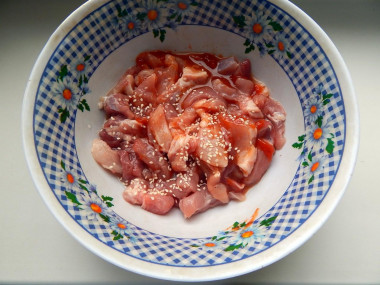
Pour the cooked marinade over the pork. Stir so that the meat is well soaked in marinade and leave it for half an hour for marinating.
Step 5:
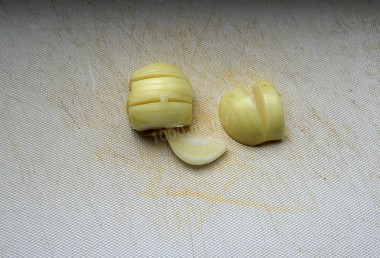
Meanwhile, cook the onions. Peel the onion from the husk and cut it with feathers. If desired, you can use a blue onion.
Step 6:
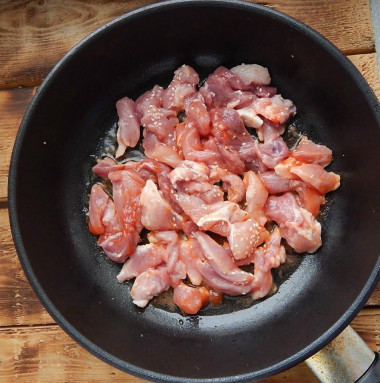
As a rule, pork in Korean is cooked in a wok - deep frying pan, which has a narrowed bottom. If there is no such thing, then a cauldron or an ordinary deep thick-walled frying pan will do. Pour vegetable oil into the pan. Turn on the fire. We put the meat on the heated oil. Fry it on high heat until browned.
Step 7:
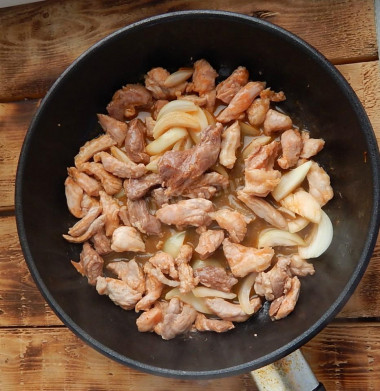
Add the cooked onion. Turn down the heat and fry the meat with onions under the lid for about 10 minutes on medium heat, periodically stirring the ingredients with a spatula.
Step 8:

The dish is ready. The meat should turn out soft and juicy, and a small amount of sauce should remain in the pan at the bottom. We serve pork in Korean to the table hot, sprinkled with sesame seeds and chopped fresh herbs on top, as an independent dish or with boiled rice and a salad of fresh vegetables. Bon appetit!
Caloric content of the products possible in the composition of the dish
- Pork fat - 333 kcal/100g
- Pork meat - 357 kcal/100g
- Pork - low-fat roast - 184 kcal/100g
- Pork chop on a bone - 537 kcal/100g
- Pork - schnitzel - 352 kcal/100g
- Pork shoulder - 593 kcal/100g
- Boar's leg - 113 kcal/100g
- Pork - 259 kcal/100g
- Garlic - 143 kcal/100g
- Ginger - 80 kcal/100g
- Dry ginger - 347 kcal/100g
- Pickled ginger - 51 kcal/100g
- Soy sauce - 51 kcal/100g
- Granulated sugar - 398 kcal/100g
- Sugar - 398 kcal/100g
- Vegetable oil - 873 kcal/100g
- Dried whole sesame seeds - 563 kcal/100g
- Shelled sesame seed - 582 kcal/100g
- Salt - 0 kcal/100g
- Onion - 41 kcal/100g
- Ground hot pepper - 21 kcal/100g
- Hot tomato sauce - 99 kcal/100g
- Sesame oil - 899 kcal/100g

